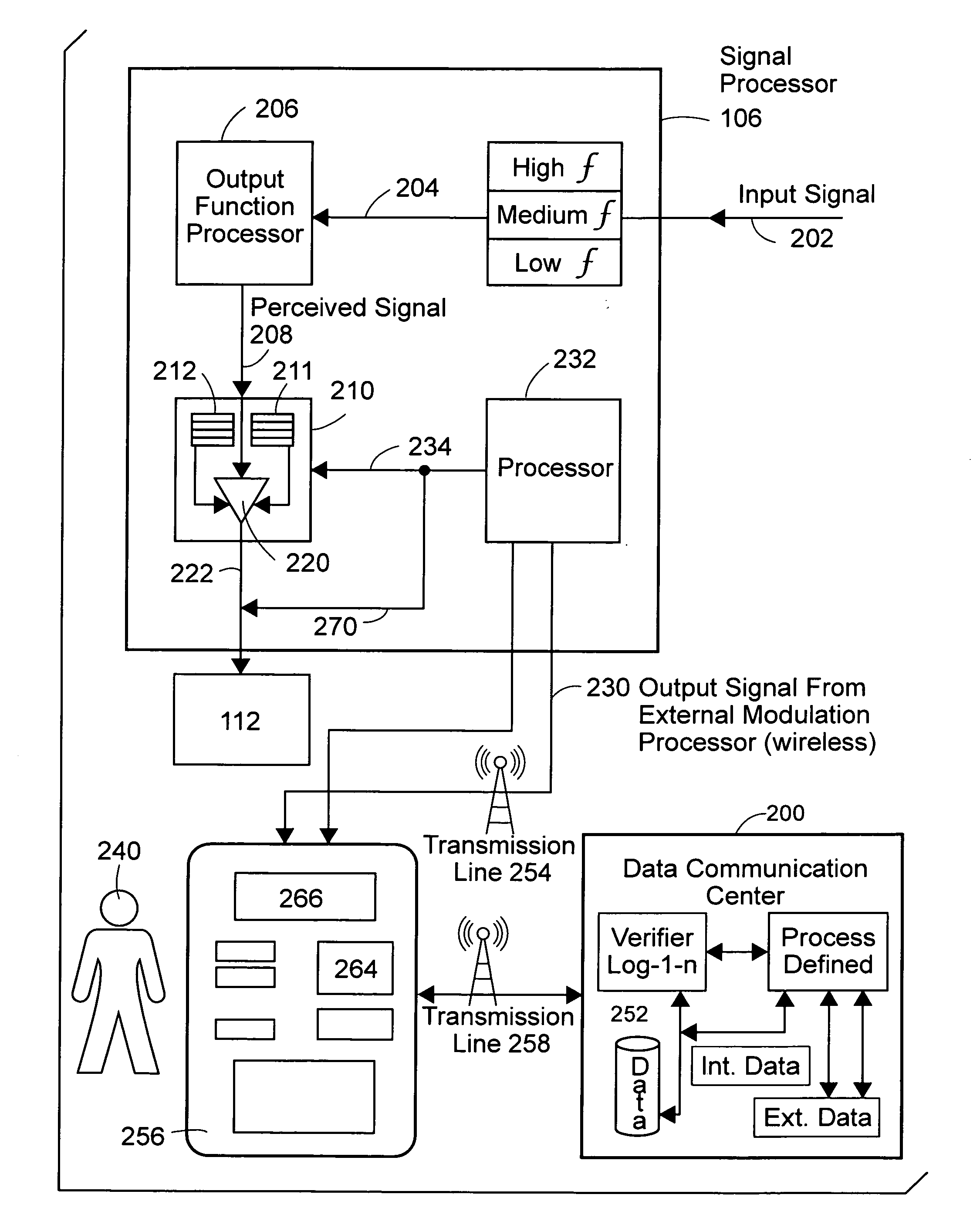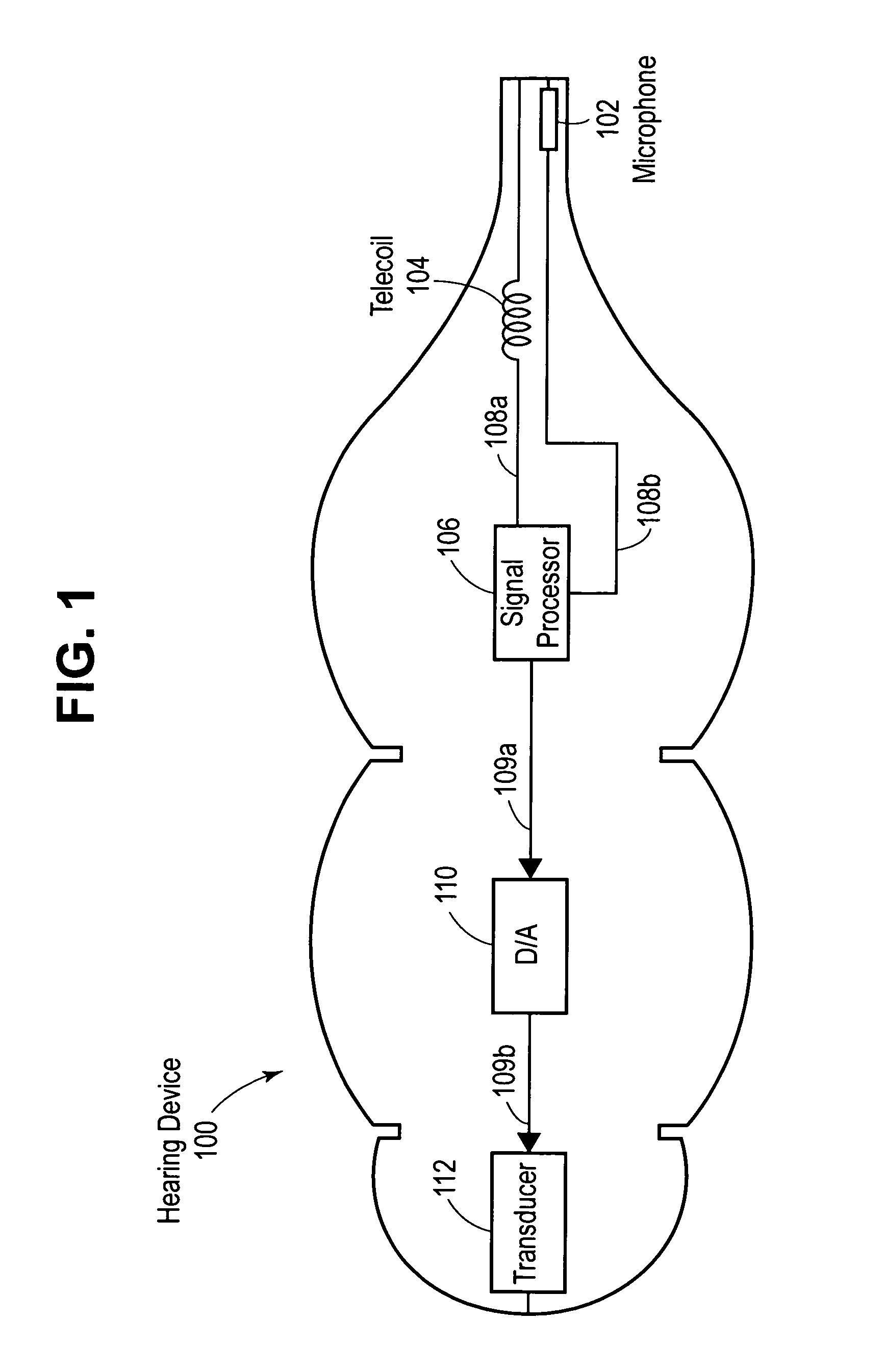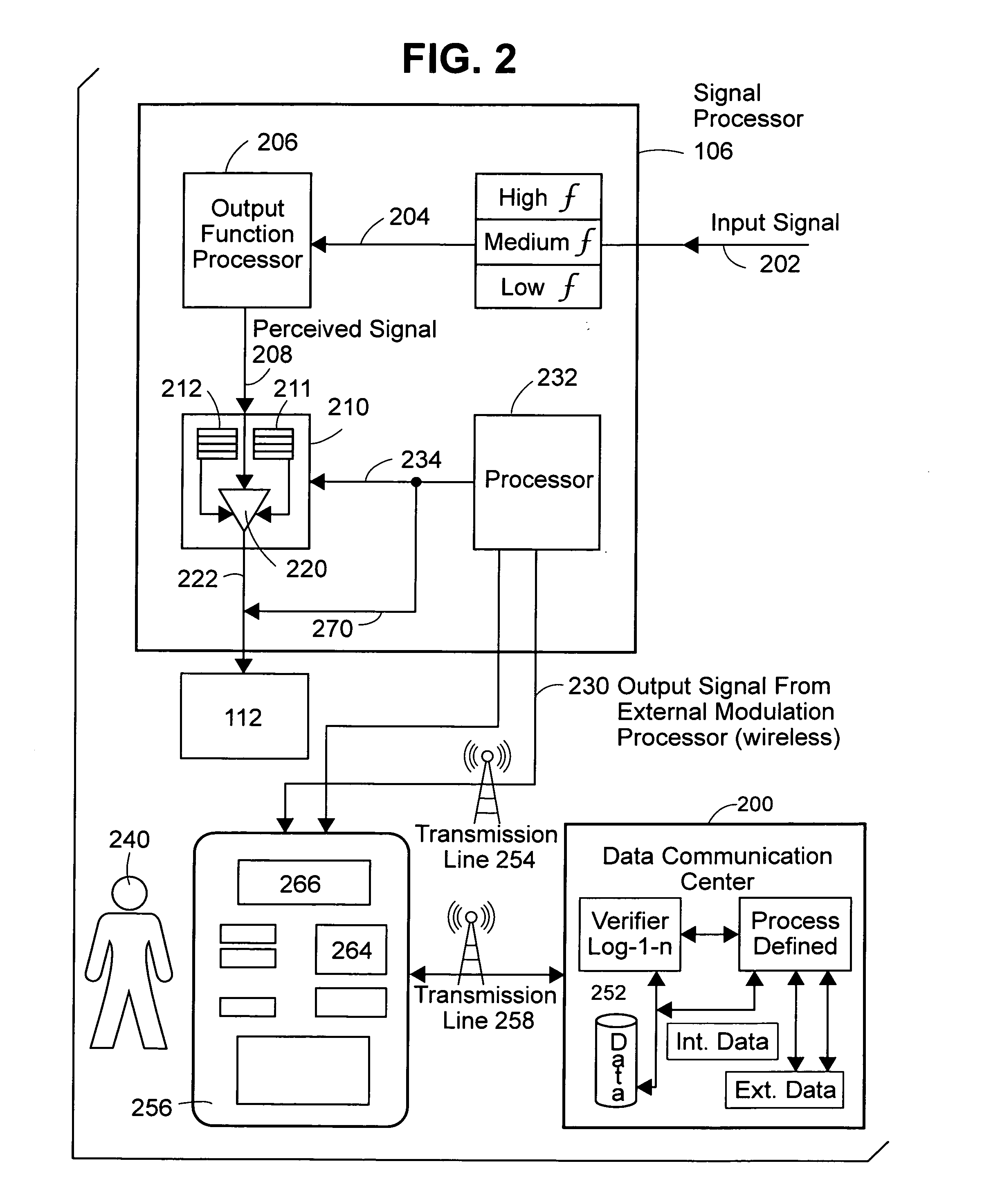Dealing with
noise and loud sounds, coupled with the current trend towards the use of personal sound producing devices and personal electronic devices (PEDs) that concentrate sound and often are played at
decibel levels to exclude outside sounds, has caused hearing damage to many individuals at far earlier ages than previously reported.
Such PEDs have enjoyed great success for several years, but they have the major
disadvantage of acoustically isolating the user from the surrounding environment, particularly since a large number of users prefer to listen at a very high volume.
Although perfect acoustic isolation allows for listening comfort, such isolation could subject the user to a wide range of
hearing loss.
In all cases, a
background noise of 80 dB (commonly encountered in urban environments) caused users to increase the volume on their devices to dangerous levels.
Hearing damage from common “social
noise exposure” has been steadily increasing with noise coming from everyday social environments such as gyms, restaurants, fitness classes and bars.
Noise in the street is often exacerbated by the proximity of buildings, which tend to cause the sound to reverberate and surround an individual.
However, that auditory stimulus can cause damage, both as the result of instantaneous crowd and event noise and cumulative event noise.
Moreover, attendance at the event can cause individuals to feel that they are being deprived of additional information and stimulae that they might otherwise obtain if they were to view the event remotely, such as through a television broadcast.
To overcome that perceived deprivation, attendees often carry radio or television devices with them to such events and attempt to listen to the devices in order to obtain external commentary and information while also viewing the event “live.” That has the immediate drawback of requiring the attendee to maintain the audio level of the radio or television at a sufficiently high level so as to be able to hear it over the din of the event and it also may result in
lag times and other inconvenient and undesirable side effects.
This can impede the enjoyment of the event for others and, if the radio or television is kept near the person's ear—as is common—can damage the hearing of the user.
Noise and harmful
exposure to it is also steadily rising with the growth of sports centers (particularly ones that are contained so that the noise tends to reverberate and surround the attendees), or ones where there is a constant level of extreme noise, such as motorcar races.
The advent of both higher noise levels and the creation of situations where individuals use sound to insulate themselves and hear what they want to hear at a
decibel level that excludes otherwise intrusive sound has created a serious
public health issue: hearing damage is becoming a major contemporary problem.
While this problem is demonstrable, prevention and treatment are insufficient and efforts to minimize the damage are not properly directed.
The
hearing aid market—while massive—still almost exclusively speaks to the elderly, as there is a massive stigma against adopting hearing aids across all
demographics.
Hearing loss and hearing research are huge fields, and the development of hearing aids to assist persons with
hearing loss achieve greater
auditory information spans biomedical research,
technology development, audio research, and social, occupational, and environmental research, but the use of hearing devices as auditory data and stimulus augmentation devices for use in connection with events has not gained currency.
NIHL is preventable, as it is caused by overexposure to excessively loud noise or excessive duration of listening and it is causing hearing problems on an unprecedented scale, especially among those aged 20-39.
Once damaged, these cells cannot be repaired.
This type of hearing damage is becoming a major problem.
Sound intensity, measured in dBs, is known to cause permanent hearing damage at levels over 85 dB.
The
prevalence of hearing damage, and lack of protective measures which are acceptable to those who are likely to incur the hearing damage is remarkable, especially when it comes to “social
noise exposure.” While regulations such as those drafted by NIOSH and the European Commission have been applied to occupational hearing safety for nearly thirty years, few if any limits are enforced for event or social noise sources, which can be equally bad or, in many cases nowadays, worse.
Event noise such as that found at Olympic games or polo and tennis matches, while potentially damaging to hearing, are overshadowed by event noise at motor car races, motorcycle races and events such as football, soccer, hockey, basketball and baseball games and the like.
Similarly, event noise at “sound events” such as concerts, multi-media sound / visual exhibitions, political rallies, and the like have the added problems that the attendee is there precisely to be engulfed and surrounded by the very sound that is injurious to their hearing.
High
sound pressure levels or a weighted measure over time so that the aggregate of 100 dBs (dBA?) over 15 minutes of
exposure, can cause similar injury.
Despite these recommendations and the documented effect, which results from ignoring hearing health warnings that are becoming more and more prevalent both through popular media and official hearing organizations, there is little effort being made to develop and implement a
system, which detects the presence of hearing-damaging situations and protects the individual.
Moreover, since the effect of noise is cumulative and there is a desensitizing element, which occurs when a person is subjected to hearing-damaging situations, there is a tendency to ignore the effect until it is too late and irreversible.
Earpieces that generate an acoustic output
signal are usually used as output
converters; however, the use of such earpieces to provide data streams which permit auditory augmentation and concomitant visual augmentation of events have not been employed in connection with such events.
This type of circuitry is generally the least flexible.
While the
list above demonstrates a number of attractive and important technological features of new hearing aids, which permit individuals with hearing impairments to enjoy a wide range of auditory stimulae, there has not been an effort to adapt the
hearing aid technology to engage those without current otic issues or otic issues on the severity that would require a traditional “
hearing aid” in order to prevent them from becoming impaired or deaf to the extent in which a hearing aid would then be required.
Similarly, there has been no effort to adapt the current hearing aid technology to permit event attendees to access data streams that can augment the sensory experience of attending the event, while providing protection both from the event noise and the auditory component of the event augmentation data signals, nor any real effort made to de-stigmatize the negative impression associated with the term “hearing aid.”
Thus, the lower sensitivity of the ear at the frequency extremes is often compensated for by turning up the sound and endangering the ear.
No device currently exists that achieves all of these goals.
 Login to View More
Login to View More  Login to View More
Login to View More 


